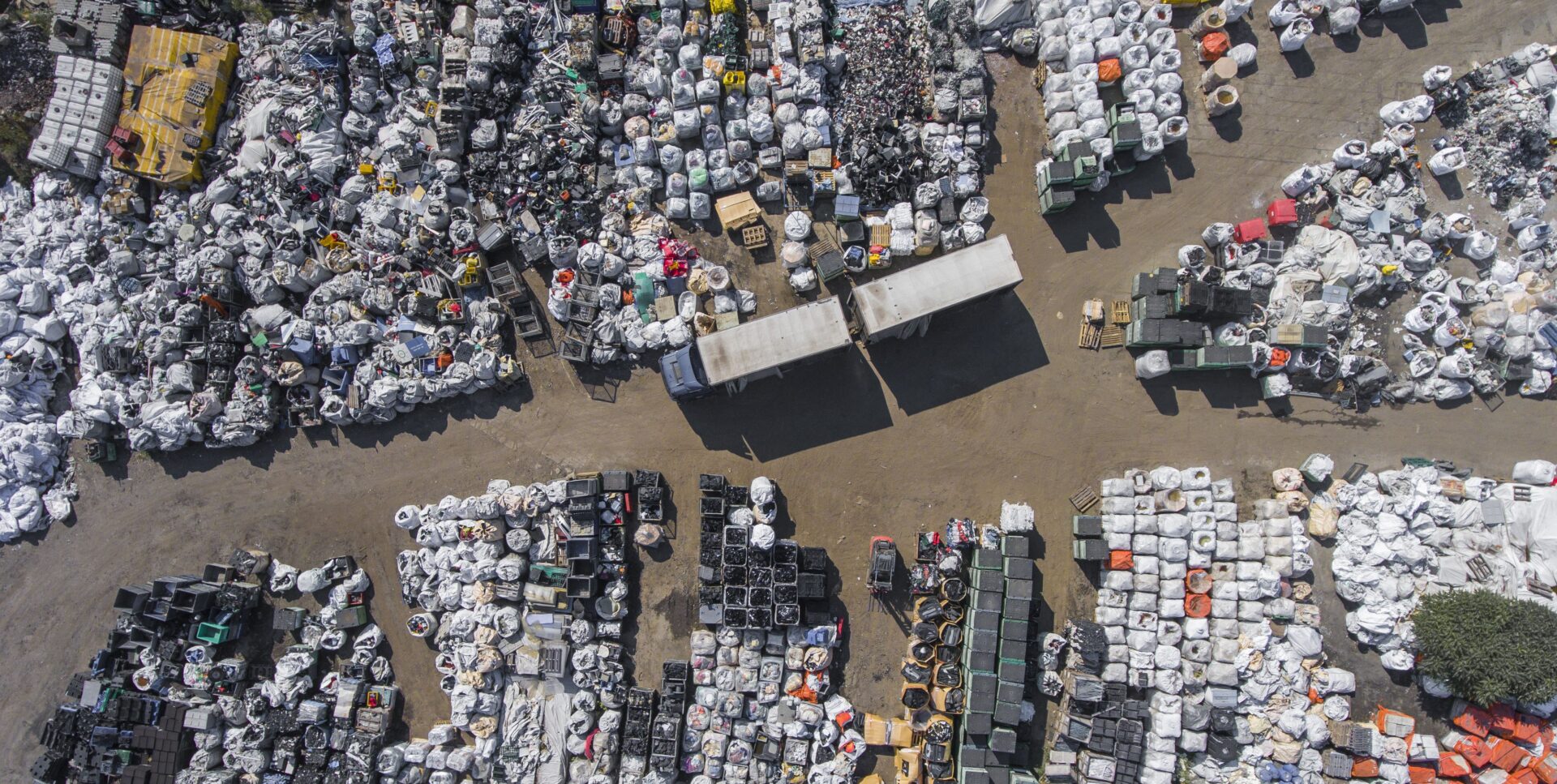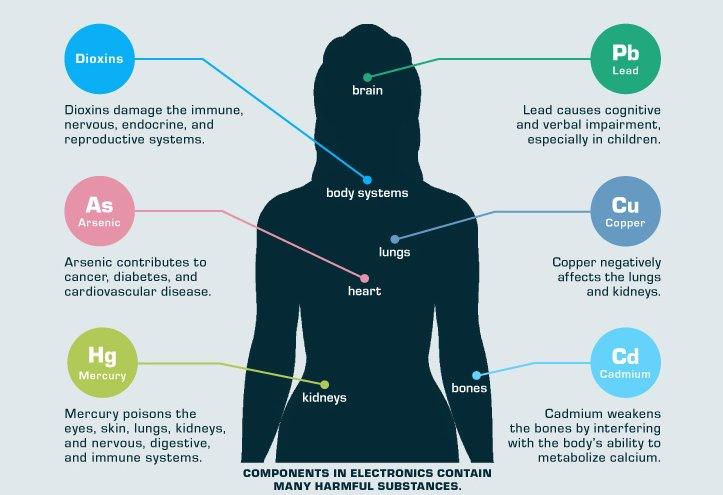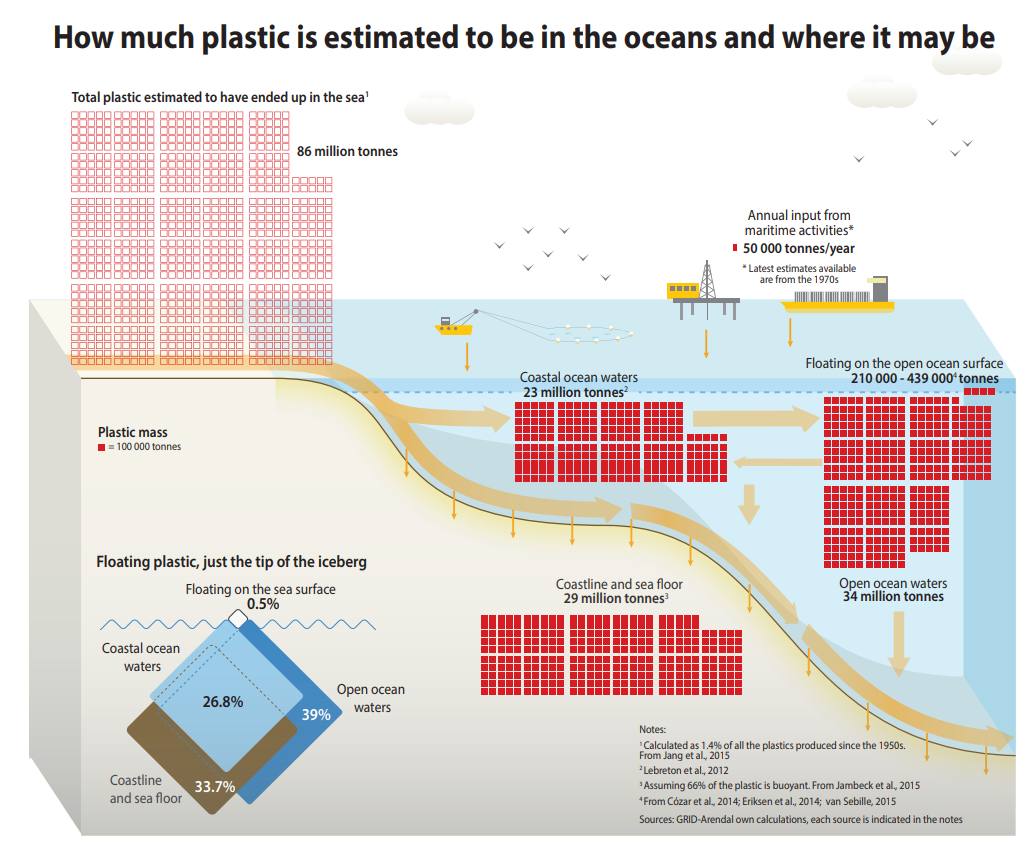
MOOC: Auditing waste management
1.3. Problems caused by mismanagement of waste
Waste can cause different problems that may have a negative impact on people’s health and well-being and on the environment. Here is an overview of the most important and frequent issues (based on INTOSAI WGEA guidance material ‘Auditing waste management’ []):
Air emissions
Air emissions are mainly produced by fumes from the burning of waste and also landfill gases. Fumes from open waste burning practices release hazardous components into the air. While waste incineration (controlled burning in special plants) is nowadays rather advanced and modern incinerators produce considerably less or almost no toxic emissions and pollution, problems may still arise in cases of incinerators that are old or based on insufficient technology. These can be a source of hazardous emissions such as heavy metals and dioxins. A significant proportion of greenhouse gas emissions related to waste is released into the air during the degradation of organic matter in landfills. While methane typically constitutes 55% of emissions from landfills, carbon dioxide represents around 35%. Several other gases are released in smaller amounts.
Health impact
Air pollution may cause health effects such as respiratory problems, as contaminants are absorbed into the lungs and human tissue. Some air contaminants may also harm animals and humans when they come into contact with the skin.
 AUDIT CASE: USE OF BURN PITS
AUDIT CASE: USE OF BURN PITS
United States – Health effects of the use of burn pits In 2016, U.S. Government Accountability Office (GAO) carried out a study to review the Department of Defence’s (DOD) activities related to the use of burn pits – one of several methods to dispose of the waste generated in the frames of military operations abroad. As this waste management method produces smoke and harmful emissions likely to result in acute and chronic health effects to those exposed to the emissions, GAO investigated the reporting, issuing of guidance for burn pit use as well as the assessment of health risks of burn pit use. As a conclusion of the study, GAO commended the efforts made to reduce the use of burn pits (using alternative methods such as incineration), but also pointed to the fact that not all commands had specific policies and procedures for burn pit operations and more research was needed about the relationship of direct individual exposure and long-term health issues. Recommendations were formulated in line with these observations. |
Toxic components such as Persistent Organic Pollutants (POPs) pose particularly significant risks to human health and the environment as they bioaccumulate through the food chain. Animals eating contaminated plants have higher doses of contaminants than if they were directly exposed. For humans, contaminants they are exposed to via food chain or air emissions may have effects on the nervous system, damage the kidneys and cause mental disorders and cancers. As an example, health impacts of improperly managed e-waste are described on Figure 7.

Figure 7. Impacts of e-waste on health
Source: https://www.greenit.co.in/impacts-of-e-waste-on-health.html
Waste that is not properly managed – especially excreta and other liquid and solid waste from households and the community – is a serious health hazard and leads to the spread of infectious diseases. For example, skin and blood infections result from direct contact with waste and from infected wounds; eye and respiratory infections result from exposure to infected dust, especially during landfill operations; different diseases result from the bites of animals feeding on waste; intestinal infections are transmitted by flies feeding on waste; and certain chemicals, if released untreated (e.g. cyanides, mercury and polychlorinated biphenyls), are highly toxic and exposure to them can lead to disease or death.
Ecosystem services in danger
Ecosystem services are the many and varied benefits that humans freely gain from the natural environment and from properly functioning ecosystems including e.g. forest, grassland, aquatic and agro-ecosystems. Collectively, these benefits are becoming known as ‘ecosystem services’ and are integral to the provisioning of clean drinking water, clean air and the natural pollination of crops and other plants, among many other services. We can even think of the decomposition of waste, especially organic waste, as an ecosystem service.
For further information on ecosystem services, please see MOOC ‘Introduction to environmental auditing in the public sector’.
Human and ecosystem health can be adversely affected by all forms of waste, from its generation to its disposal. Over the years, waste and waste management responses have impacted on ecosystem health and human well-being. For example, terrestrial and aquatic ecosystems have been affected by nutrient pollution and chemical toxins and irrigation with wastewater has damaged the soil and health of local populations [].
Soil contamination
Hazardous substances may enter the soil as water trickles from contaminated sites leaching chemicals, fertilisers or pesticides. Contaminated soil can damage flora and fauna directly and also indirectly by releasing toxic components into the food chain. Ingesting, inhaling or touching contaminated soil may have a serious adverse impact on humans and animals.
Surface and groundwater
Precipitation or surface water seeping through waste will absorb hazardous components from landfills, agricultural areas, feedlots, etc. and carry them into surface and groundwater. Industrial and household discharges (including also for example private medical waste) are also a major factor affecting the quality of water. This all may lead to changes in the chemistry of water, with major effects on the ecosystem and the food chain. The contamination of surface and groundwater may cause damage to wetlands and their ability to support healthy ecosystems and control flooding. Contaminants may also enter the food chain through fish and shellfish and accumulate when eaten by other animals. Contaminated groundwater also poses a great health risk, as it is often used for drinking, bathing and recreation, as well as in agricultural and industrial activities.
Pressures affecting the status of water as well as water pollution are covered in more detail in MOOC Auditing Water Issues.
 AUDIT CASE: WATER POLLUTION
AUDIT CASE: WATER POLLUTION
Philippines – Reducing water pollution through better solid waste management SAI of Philippines has conducted various waste-related audits with environmental and health issues that inadequate waste management practices may cause particularly in mind. In its 2015 audit report on the Environmental Management Buraeu, SAI Philippines examined the results of Adopt-an-Estero/Water Body Program designed to reduce water pollution in rivers and creeks that empty into Manila Bay by cleaning the waste, debris and silt in these water bodies and sustain their clean state afterwards. Untreated wastewater and the dumping of garbage had brought along problems such as the clogging of waterways and prolonged flooding, waterborne diseases, floating garbage and unpleasant odour. While progress was observed in some areas of the project, problems appeared prevailing or worsening in others and water quality had only marginally improved. Making improvements to the solid waste management system and achieving greater involvement of concerned citizens were among recommendations made by the SAI of Philippines to the Environmental Management Bureau. |
Marine pollution
Marine pollution constitutes a significant threat to marine life, fisheries, mangroves, coral reefs and costal zones. Approximately 80% of this pollution derives from land-based sources, such as pesticides, persistent organic pollutants, heavy metals from mining and electronic waste, radioactive substances, wastewater, industrial discharges and marine litter. In regard to the latter, plastic waste is a growing concern as it spreads across the world’s oceans. As plastic materials degrade slowly, they can remain drifting in oceans for years, even decades, and form entire islands of debris. Plastic may also transport other hazardous waste, such as POPs, with long-term effects on the environment. Marine pollution also includes oil spills, discharges of oily waste from ships and untreated sewage.
The marine plastic issue is an important challenge for mankind to address (Figure 8). Plastic pollution is severely affecting the marine population, with the number of species known to have been affected having doubled since 1997, from 267 to 557 species. This includes 100% of the 7 marine turtle species, 66% of marine mammal species, 50% of seabird species and strong increases for fish and invertebrate species [].

Figure 8. Plastic in oceans.
Source: http://www.grida.no/resources/6907
Odour and littering
Waste left in streets or at landfill sites can also be a source of odour and littering problems. Landfill can cause the loss of amenities and a nuisance several kilometres away from where it is located. While littering is often an aesthetic problem, it may also constitute an environmental risk. Marine plastic litter may carry POPs, while littering on land may lead to the blocking of drainage pipes and cause secondary environmental problems such as flooding.
Pests
Landfills and waste transfer stations can attract various pests (insects, rodents, gulls, etc.) that look for food from waste. These pests can spread diseases through viruses and bacteria (i.e. salmonella and e-coli), which are a risk to human health. Pests can also be a nuisance by making noise and carrying garbage or simply because of their huge numbers.
The main reason why waste management sites attract pests is the presence of food waste and packages contaminated by food. Separating food waste from the municipal solid waste stream at the source and composting food waste alleviates problems with odour and pests at landfills.


